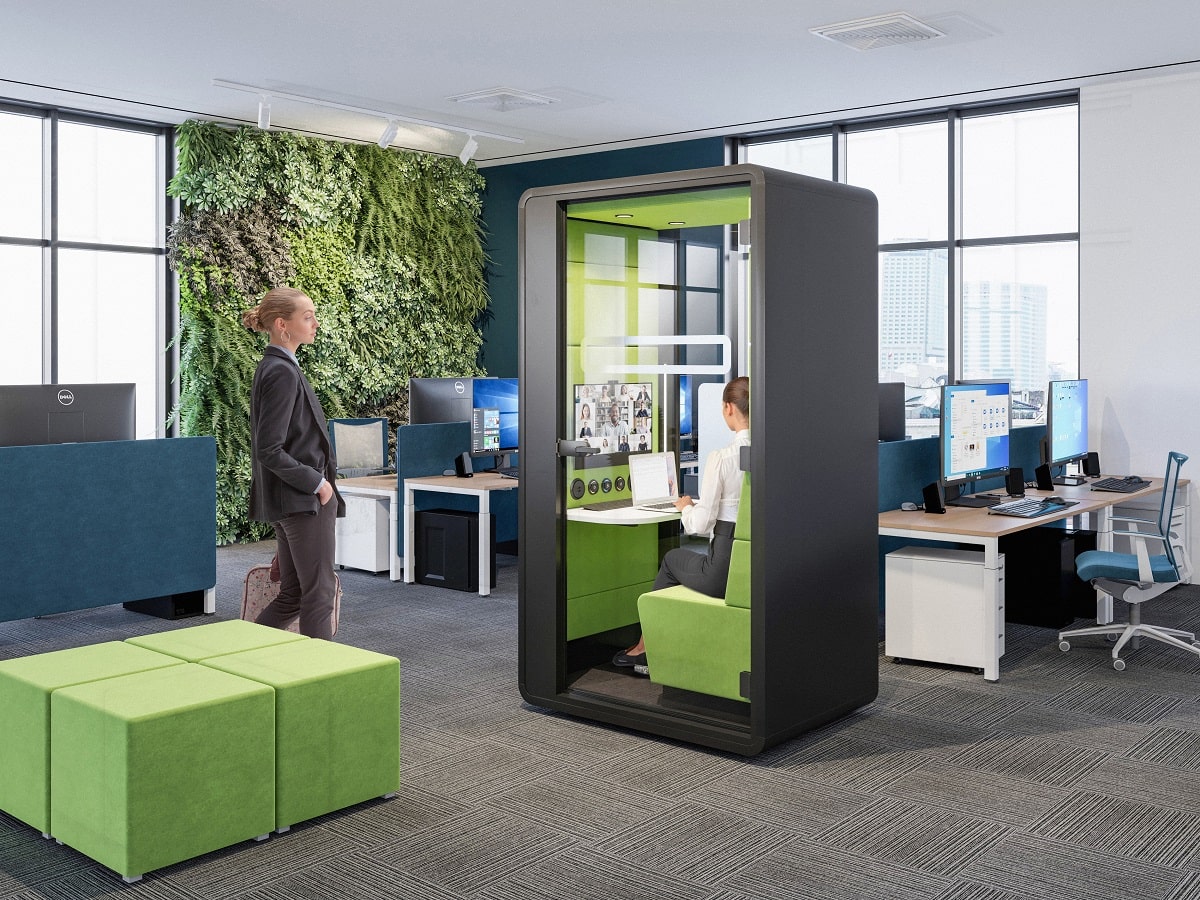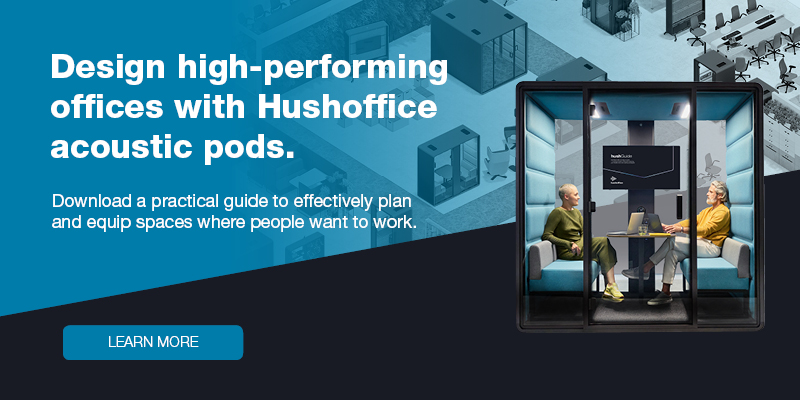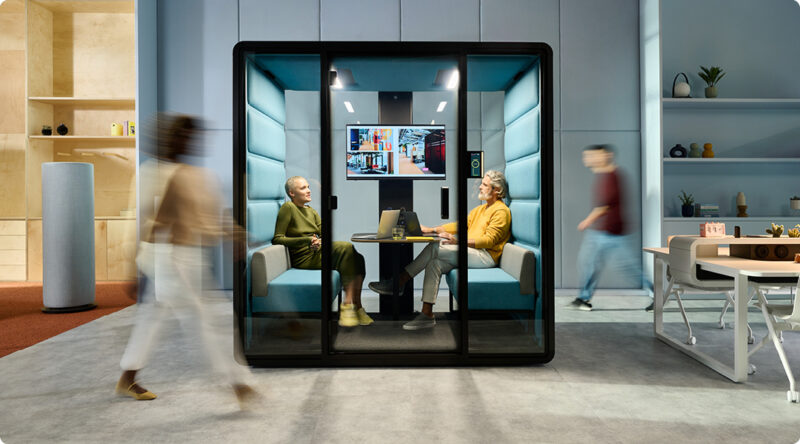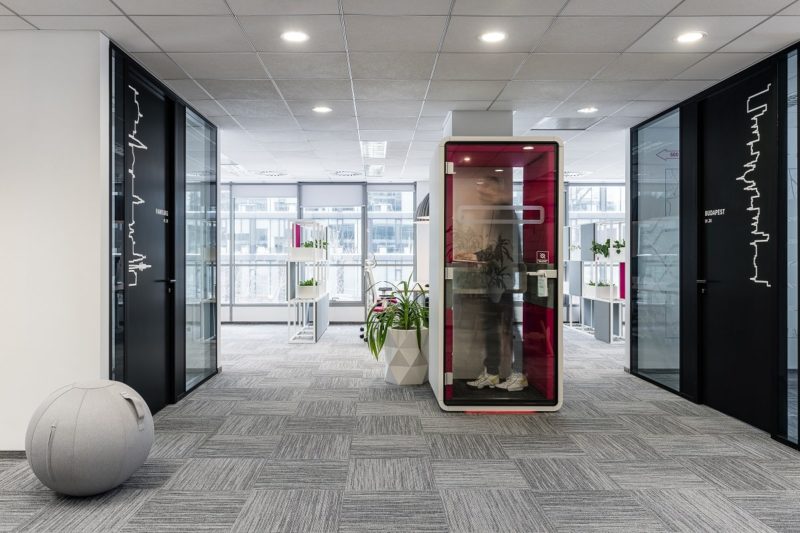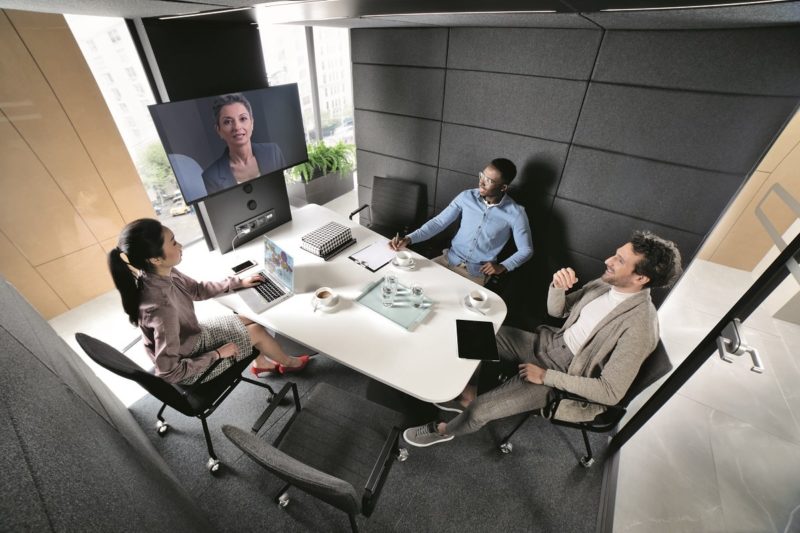Address return-to-office anxiety with acoustic pods?
- Posted on: 15 February 2024
- By: Hushoffice Team
In 2021, 100% of employees had anxiety about returning to the office. 71% saw less flexibility as a top source; 68%, the commute. Today, this anxiety persists. As organizations retrofit their offices to give more flexibility, earning its commute, acoustic pods prove part of the solution.
Return to office anxiety – tl;dr
Return to office (RTO) anxiety is the angst or uneasiness employees are faced with as they transition to more in-office work. The “RTO” transition period is indeed crucial, for research shows employees whose mental health was positively influenced by their return are about 2X more likely to be present at work. Meanwhile, those whose mental health was harmed by their return are about 5X more likely to shirk responsibility.
“RTO” fear and stress is pervasive because it challenges the work-life balance many employees attained at home. In some cases, commuting stress considerably amplifies the problem. Loss of freedom is another significant factor; a large share of employees worry about going without the control they had over their work environment while working remotely.
To address “RTO” stress, the office’s long-standing stress points should be addressed first. These include team conflict, overwhelm, and office noise. Pods are a smart spatial solution that answer these long-standing stress points. They afford the personal space needed for improved work relations, the focused space needed to work more efficiently, and the quietude needed for relief from office noise. Additionally, pods give employees more command over their mental bandwidth, accommodating the occasional breather necessary to refocus and recharge, finding balance between work and life.
Fear of returning to the office. What is it all about?
Return to office (RTO) anxiety is the stress, apprehension, or unease employees experience transitioning to more in-office work. Various factors cause it: concerns about health and safety, readjustment to a more structured routine, and, most notably, a potential loss of flexibility.
The switch to more in-office working marks a pivotal moment.
Research indicates that employees whose mental health is positively impacted by their return to the office are about 2X more likely to be present at work. Meanwhile, those who have a negative mental health impact are about 5X more likely to take reduced responsibility.
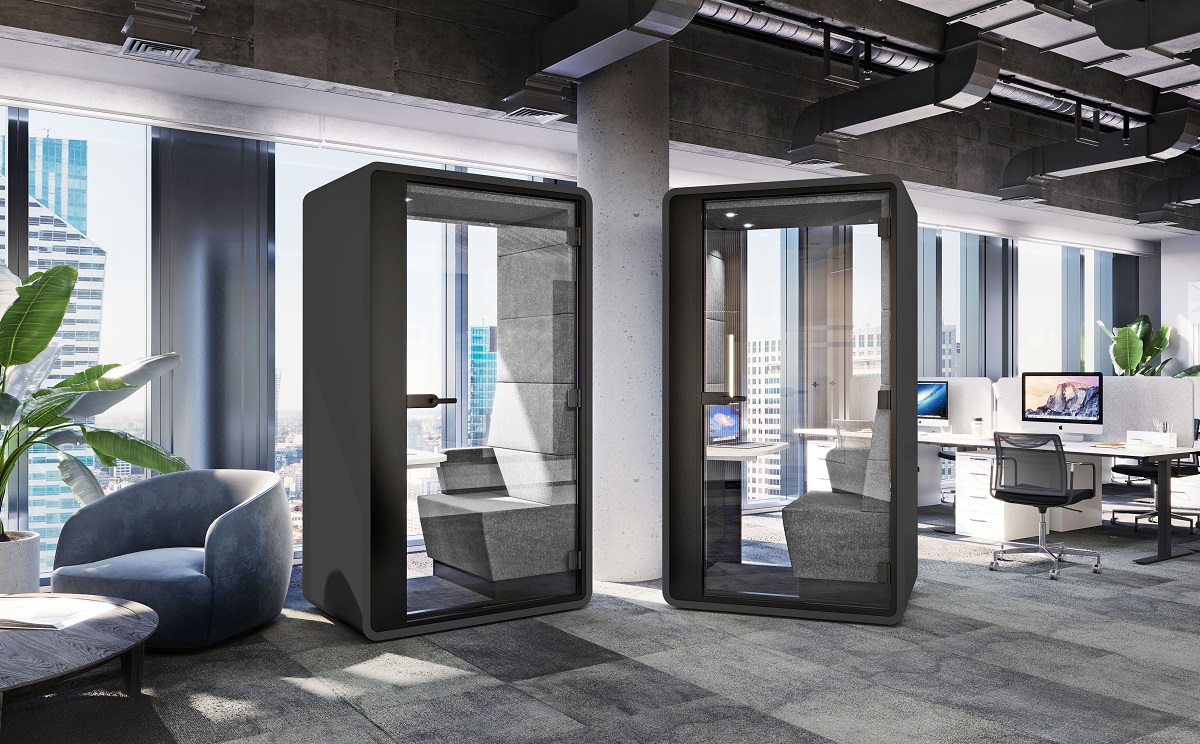
In addressing anxiety points, employers will make the return net positive for their teams.
Employees reap many rewards from smoothly, slowly working more days on-site. People who work in the office see more promotions and mentoring than those who work from home. And unsurprisingly, 79% of employees say the office improves their sense of community and belonging.
“RTO” makes employees fearful and anxious because change is hard.
Human psychology is rooted in evolution. Familiar scenarios offer a sense of safety and predictability, allowing us to relax our guard. Conversely, unfamiliar situations trigger the instinct of vigilance for threats. This alertness, though evolutionarily based, is ultimately emotionally draining.
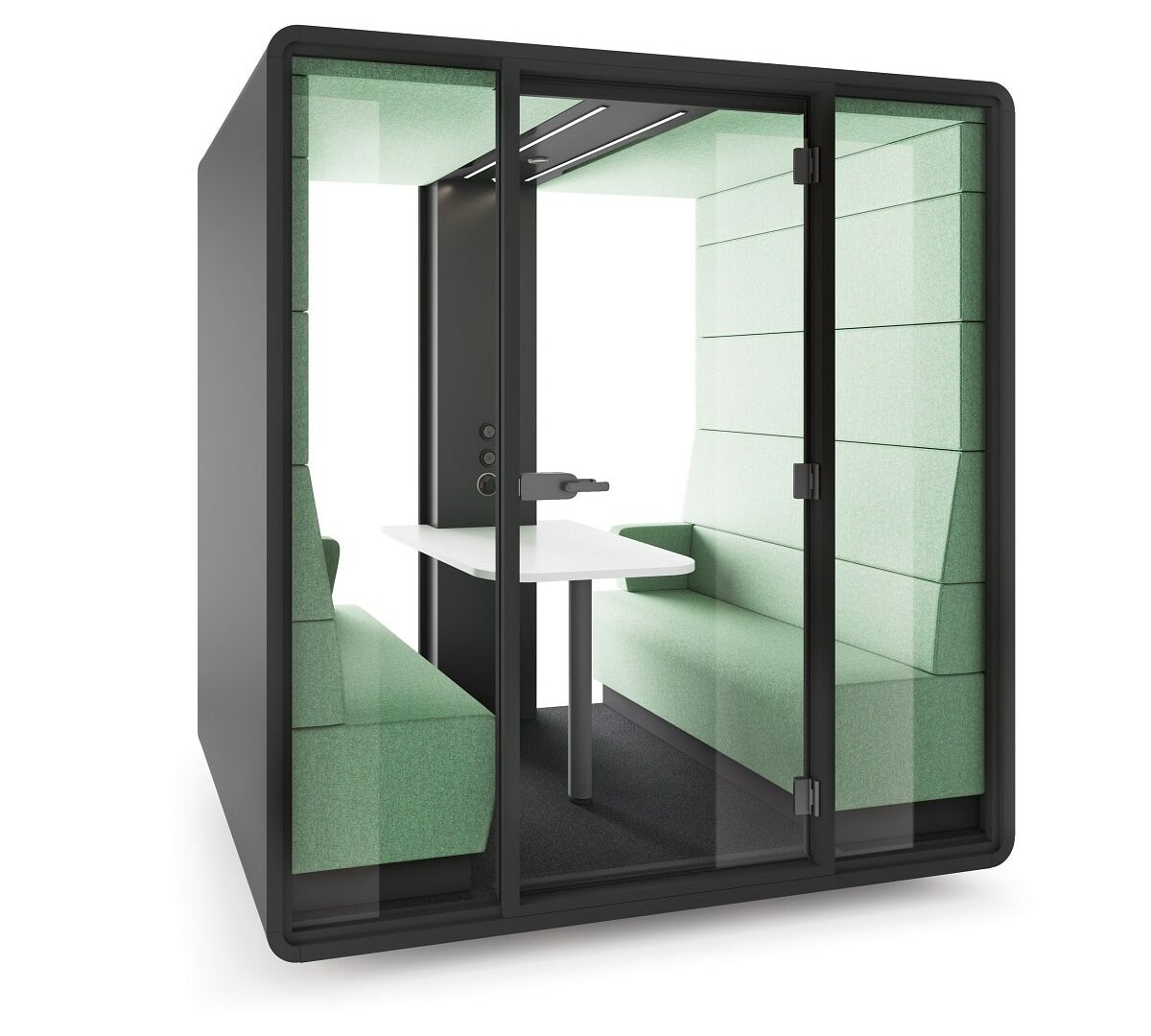
In the world of office design, the changes since 2020 are manifold.
Change — even good change — is always a bit uncomfortable. And employees are returning to wildly different office spaces. Furniture is more modular, reconfigurable per varying needs. Layouts have matured toward privacy, well-being, and coziness. And technological integration has multiplied.
Of course, the pandemic significantly altered employee behavior, prompting a paradigm shift in the way offices are arranged. The surge in remote work spurred on demand for more flexibility, giving rise to the premise of ultra adaptable workplaces. As such, today’s successful floors feature plenty of movable furniture and adjustable desks for employees to tweak as seen fit. Hybrid offices, mixing remote and in-person modes, have emerged as the obvious approach to the ebbing, flowing dynamism of a global and volatile work world. And as for employees, they place the highest premium on privacy and quietude in the office. Many got accustomed to more peacefulness at home and are well-acquainted with the necessity for focused, undisturbed work. These aspects they expect from the office, as stability has become a beneficial, anticipated comfort
– says Mateusz Barczyk, Senior Brand Manager, Hushoffice.
Employee fears about getting back to the office really revolve around control.
RTO poses a challenge to the newfound work-life balance achieved at home. In many cases, commuting stress further compounds this anxiety. And similarly, many employees fear relinquishing the command they gained over their work environment, whether noise or ergonomics be the main thing.
The long-standing sources of stress in the office should be addressed first.
Interpersonal conflict, looming deadlines, and nagging office noise top the list. Underpinning all these stress points though, a universal preference for autonomy is apparent. Today’s employees want to have more control over their team relations, workflow, and immediate work space.
Team conflict and personality differences…
Introverts may be agitated by colleagues chatting on the floor. Extroverts may be bothered by eavesdropping during personal calls. In both cases, team relations are tense. Private spaces like pods help — contained spaces to discreetly retreat to when isolation is needed.
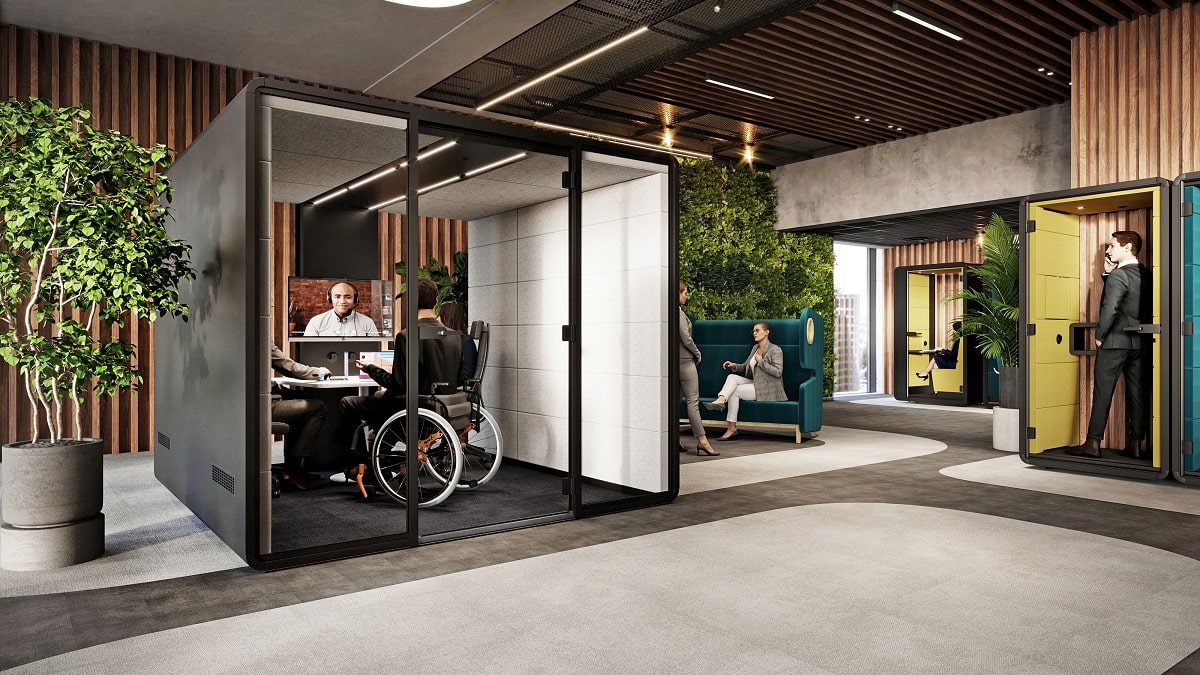
Work overload and pressing deadlines…
Deadlines may be the most common cause of work stress. Roughly 38% of employees regularly burn out in order to hit one. This is concerning, given the far-reaching consequences of burnout. In the end, anxiety from pressure to navigate intricate work within limited time frames harms performance.
The time constraint, urgency, and longer work hours that deadlines entail makes them inherently stressful. We present Hushoffice pods as a welcome buffer to this stress for they are miniature, at-hand oases of focus. In a pod, employees can lock in on the task, unbothered by a thought, sound, or commotion of anything beyond the work before them. In such seclusion, concentration comes easily, freed of the intermittent interruptions encountered on the open floor. Working becomes more efficient and deadlines more achievable. Meeting booths in particular are a big help in lessening the ubiquitous deadline dread, for a meet booth like hushMeet is a devoted space to tackle issues like confusion, friction, and miscommunication as a team — issues that, unresolved, delay progress
– says Mateusz Barczyk, Senior Brand Manager, Hushoffice.
Stressful background office noise…
Studies show noise induces cortisol, impairing the prefrontal cortex: a part of the brain responsible for planning, reasoning, and impulse control. This brain region also plays a role in short-term memories. Thus, noise obviously disrupts clear thinking too. The impact is unpleasant and stressful.
Employees who had relative quietude at home were conditioned to silence.
Liberated from background sounds like conversations and ringing phones, peacefulness became the norm. But this switch makes anyone more vulnerable to distractions upon reentry into a noisy office. Thus, unless office noise is systematically addressed, RTO will be “sensory whiplash.”

What is an acoustically “sound” office space anyway?
An office with great acoustics is not absolutely quiet. Total silence isn’t healthy or enjoyable for humans. Instead, variety is the goal. Indeed, a well-engineered workplace offers a balanced variety of soundscapes, each one suiting a specific, designated purpose. Consider the following pointers.
Acoustic panels seamlessly blend into the office decor, subtly diffusing sound and minimizing echoes. The absence of distracting reverberations allows for clear, undisturbed communication.
The softness underfoot from well-chosen carpets and rugs not only adds a touch of comfort but also absorbs footfall and ambient noise, creating a tranquil atmosphere.
Acoustic ceiling tiles elegantly integrate with the office look, reducing sound reflections and creating a balanced auditory scape. The ceiling design enhances speech clarity during conversations.
Ergonomic furniture with built-in sound-absorbing materials complements the overall design. Soundproof panels on workstations create individualized, quiet workspaces.
The thoughtfully arranged workstations and private nooks allow for varied work modes. Each zone is strategically placed to minimize sound transfer, creating dedicated areas for focused work and collaborative discussions.
Large soundproof booths like hushAccess.L provide employees with secluded spaces for tasks requiring intense concentration or private conversations. Visual openness and auditory privacy are reconciled.
Solid doors with effective seals ensure that sound doesn’t leak into private spaces. Double-glazed windows maintain tranquility by minimizing external noises.
The HVAC system operates seamlessly, providing comfortable temperatures without the distracting hum or clatter. Soundproofing materials in the ventilation system maintain a peaceful ambiance.
Noise from office equipment is virtually nonexistent, thanks to topical soundproof solutions. Strategically placed plants not only contribute visual appeal but also absorb ambient noise, further enhancing the acoustical quality of the space.
Acoustic cabins improve noise, privacy, and autonomy, easing return-to-office angst.
Office pods trap distracting noises and stand as perfectly private work and meeting spaces. They make days in the office more productive, and deadlines more doable. Moreover, they afford personal space, giving colleagues the occasional breather needed to work together most harmoniously.
Acoustic booths get a handle on noise, making the office quieter and more welcoming.
Work pods like hushHybrid are always calm. Regardless of what is happening on the floor, they remain a dependable retreat. And they insulate any noise made inside. So, at once, the user benefits from a flawless work space while colleagues on the floor are spared their noise.
Privacy is a necessity in today’s office. Hushoffice booths afford luxurious privacy.
Employees demanded private workspaces in the office before the pandemic. Since, sentiments haven’t changed. Privacy is still the essential ingredient for flowing work, confidential matters, and collaborative sessions alike. A 4-person booth like hushMeet is a meet space that supplies it.
Step into a private office booth like hushMeet, and you enter a space of seclusion meticulously designed for optimal comfort and productivity. Comfortable furniture invites you to settle in, providing a cocoon-like atmosphere of coziness and functionality blended. Soft-upholstered sound-insulating wall panels envelop you, shielding you from office hustle. Adjustable lighting and ventilation cater to your preferences, personalizing ambiance. The pod’s glass panels to your right and left subtly reconcile separation and connection, giving a glimpse of your team beyond without compromising your privacy
– says Mateusz Barczyk, Senior Brand Manager, Hushoffice.
Office booths give employees more control over their workspace — a valued WFH freedom.
Remote work gave employees more autonomy over their space. The thought of losing it is a source of stress for many. Booths are a help here. They block out unwanted noise, yes, but also give control over the finer aspects of your immediate environment through user-adjusted lights and ventilation.
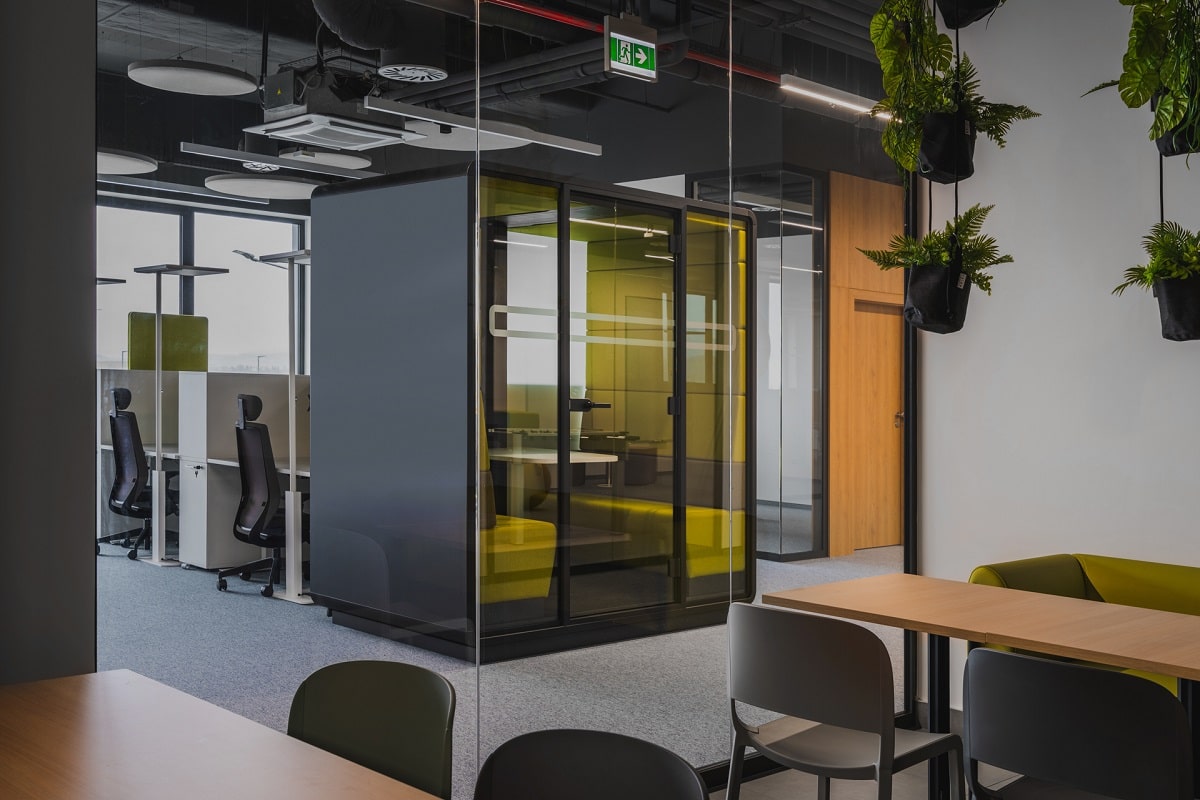
Fear of change (and lack of control) forms the basis of much RTO anxiety.
Pods cater to this aspect of human nature in a simple way. They are stable environments. And they give command over the sights and sounds around you — i.e., your immediate space. Employees with this kind of control over their workspace perform better and are more satisfied with their office.
How to ensure every employee’s fair access to acoustic cabins?
A happy medium between accessibility and privacy is ideal! If ease of access is paramount for a given pod, place the pod within five paces of its given work area. Pods for which ultimate visual privacy is the priority should be placed instead in a corner or similarly remote spot.
Clear usage guidelines help promote equitable access and prevent scheduling conflicts.
Time limits are needed to accommodate all team members fairly. It is generally helpful to designate tasks for each booth as well (private work booths for deep work; meet booths for collaborative discussions). Employees should also be asked to leave booths in the condition they were found.
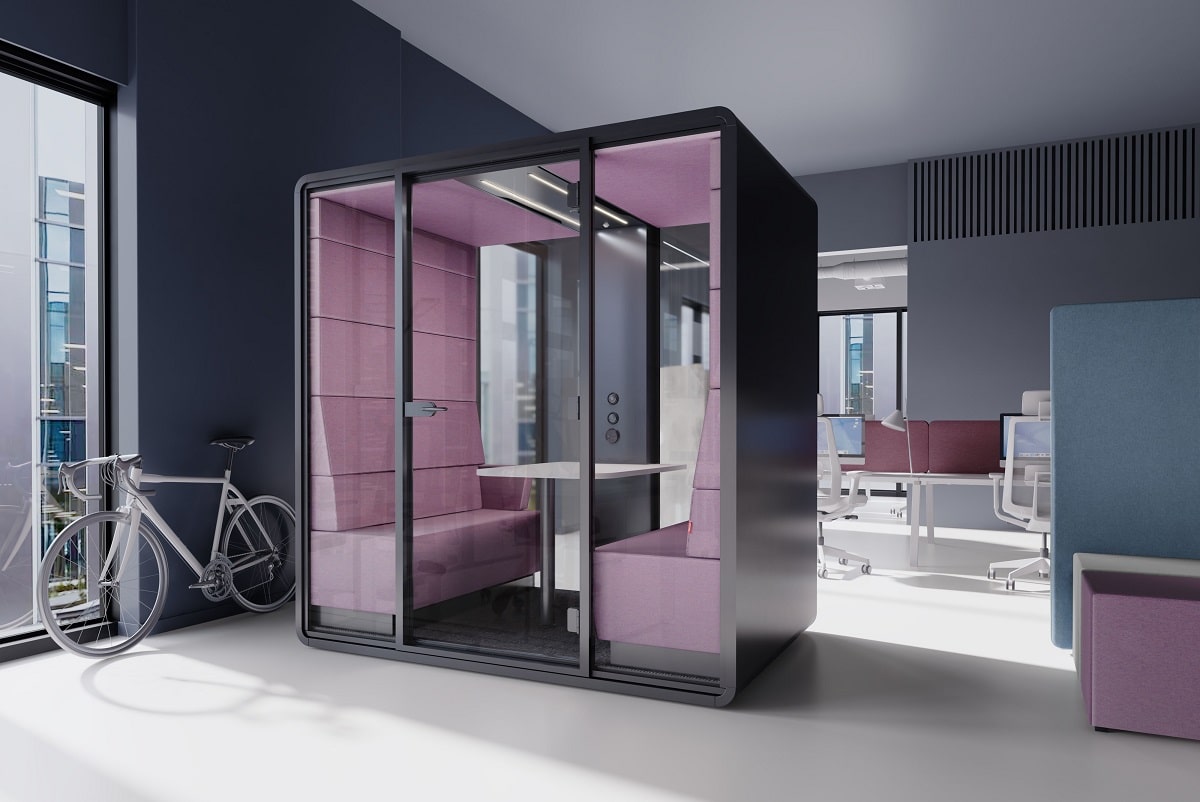
How many booths do you need?
Generally, one phone booth such as hushHybrid is enough to accommodate every 5 employees, while one team meeting pod such as hushMeet is enough to accommodate every 10 employees.
Have questions? Contact our team here.
Return-to-office anxiety – tl;dr
Return to office (RTO) anxiety is the angst or uneasiness employees are faced with as they transition to more in-office work. The “RTO” transition period is indeed crucial, for research shows employees whose mental health was positively influenced by their return are about 2X more likely to be present at work. Meanwhile, those whose mental health was harmed by their return are about 5X more likely to shirk responsibility.
“RTO” fear and stress is pervasive because it challenges the work-life balance many employees have attained at home. In some cases, commuting stress considerably amplifies the problem. Loss of freedom is also another significant factor; a large share of employees worry about going without the control they had over their work environment while working remotely.
To address “RTO” stress, the office’s long-standing stress points should be addressed first. These include team conflict, overwhelm, and office noise. Pods are a smart spatial solution that answers these long-standing stress points. They afford the personal space needed for improved work relations, the focused space needed to work more efficiently, and the quietude needed for relief from office noise. Additionally, pods give employees more command over their mental bandwidth, accommodating the occasional breather necessary to refocus and recharge, finding balance between work and life.
RTO anxiety – frequently asked questions
What is “RTO anxiety”?
Return-to-office anxiety refers to the emotional distress employees may experience as they face returning to their office for more on-site working.
What are the main causes of return-to-office anxiety?
Roughly 71% of employees report that less flexibility is a top source of RTO anxiety. 68% say the commute is the big stress factor.
How can office pods alleviate the stress employees feel as they return to the office?
Office pods and booths are private environments that give employees more control over their workspace, down to light levels and air flow. This control is cherished and desired, as employees have gotten accustomed to more control over their workspace at home. Pods also dampen office noise by containing the worst sources of it: meeting chatter and phone calls. So they make the office quieter, which is a long-standing employee demand. Simultaneously, they block out unwanted sound for the user’s benefit. They are wonderfully private work and meeting spaces that add to the office’s variety “closed” and “open” environments.
